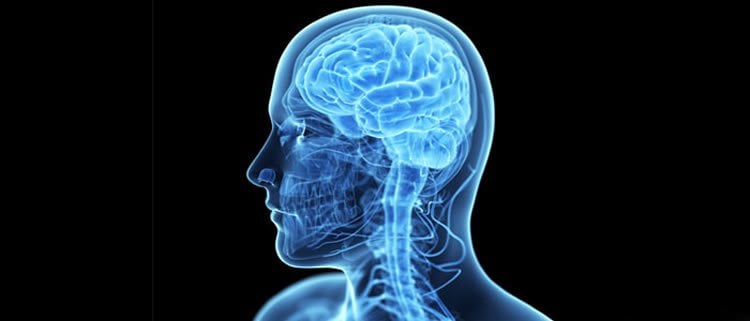Summary: Researchers have identified a neural system involved in making decisions based on preference.
Source: University of Glasgow.
Researchers have found a direct window into the brain systems involved in making every day decisions based on preference.
The study, led by a team of neuroscientists at the University of Glasgow’s Institute of Neuroscience and Psychology, and published today in Nature Communications, offers crucial insight into the neural mechanisms underlying our decision-making process, opening up new avenues for the investigation of preference-based choices in humans.
Whether we decide to opt for a piece of apple or a piece of cake is, for example, a preference-based decision. How our brains arrive at such decisions – as well as choices that rely on our subjective valuation of different alternatives – is currently a popular research topic.
Previously it was unclear where the brain implements preference-based choices and whether it uses a mechanism similar to when we make decisions purely based on the perceptual properties of the alternatives (like choosing the bigger of two items).
Study lead Dr Philiastides said: “Our research suggests that preference-based and perceptual decisions might share a common underlying mechanism in the brain. Our findings also suggest that preference-based decisions might be represented in the same brain areas that plan the action to execute the decision, i.e. the hand reaching to grab the preferred item.”
He added: “Our findings have important implications for a broad range of socioeconomic problems ranging from public policy analysis, like informing health behaviours, to brain-informed advertisement strategies and product design.
“In addition, the work can improve our understanding of mental and neurodegenerative disorders known to compromise one’s decision-making faculties, like depression, schizophrenia and Parkinson’s disease by offering a direct window into the brain systems involved in goal-directed choices.”
The study presented participants with pairs of snacks, like a chocolate bar and a pack of crisps, and asked them to choose their preferred item. To identify the brain areas involved in these decisions, the team used a state-of-the-art multimodal brain imaging procedure. Volunteers wore an EEG cap (to measure their brain electrical activity) whilst being simultaneously scanned in an MRI machine.

An EEG cap records neural activity (tiny electrical signals on the surface of the scalp), providing information about “when” a certain event takes place in the brain and how it unfolds in time, while functional MRI provides information on “where” this activity happens in the brain.
The EEG revealed that decision activity unfolds gradually over time and persists until one commits to a choice. This EEG activity was then localised with fMRI in the posterior medial frontal cortex of those who participated in the study, a brain region that has not been previously linked directly with preference-based decisions.
Andrea Pisauro, the first author of the paper, said: “This is similar to when we make perceptual decisions, like choosing the larger of two slices of cake. The brain accumulates information supporting one of the decision alternatives until an internal criterion is reached and a decision is made.”
Funding: The work was funded by the BBSRC and ESRC.
Source: Ali Howard – University of Glasgow
Image Source: NeuroscienceNews.com image is credited to University of Glasgow.
Original Research: Full open access research for “Neural correlates of evidence accumulation during value-based decisions revealed via simultaneous EEG-fMRI” by M. Andrea Pisauro, Elsa Fouragnan, Chris Retzler & Marios G. Philiastides in Nature Communications. Published online June 9 2017 doi:10.1038/ncomms15808
[cbtabs][cbtab title=”MLA”]University of Glasgow “Sweet or Savory? How the Brain Makes Preference Based Decisions.” NeuroscienceNews. NeuroscienceNews, 9 June 2017.
<https://neurosciencenews.com/taste-preference-neuroscience-6879/>.[/cbtab][cbtab title=”APA”]University of Glasgow (2017, June 9). Sweet or Savory? How the Brain Makes Preference Based Decisions. NeuroscienceNew. Retrieved June 9, 2017 from https://neurosciencenews.com/taste-preference-neuroscience-6879/[/cbtab][cbtab title=”Chicago”]University of Glasgow “Sweet or Savory? How the Brain Makes Preference Based Decisions.” https://neurosciencenews.com/taste-preference-neuroscience-6879/ (accessed June 9, 2017).[/cbtab][/cbtabs]
Abstract
Neural correlates of evidence accumulation during value-based decisions revealed via simultaneous EEG-fMRI
Current computational accounts posit that, in simple binary choices, humans accumulate evidence in favour of the different alternatives before committing to a decision. Neural correlates of this accumulating activity have been found during perceptual decisions in parietal and prefrontal cortex; however the source of such activity in value-based choices remains unknown. Here we use simultaneous EEG–fMRI and computational modelling to identify EEG signals reflecting an accumulation process and demonstrate that the within- and across-trial variability in these signals explains fMRI responses in posterior-medial frontal cortex. Consistent with its role in integrating the evidence prior to reaching a decision, this region also exhibits task-dependent coupling with the ventromedial prefrontal cortex and the striatum, brain areas known to encode the subjective value of the decision alternatives. These results further endorse the proposition of an evidence accumulation process during value-based decisions in humans and implicate the posterior-medial frontal cortex in this process.
“Neural correlates of evidence accumulation during value-based decisions revealed via simultaneous EEG-fMRI” by M. Andrea Pisauro, Elsa Fouragnan, Chris Retzler & Marios G. Philiastides in Nature Communications. Published online June 9 2017 doi:10.1038/ncomms15808






